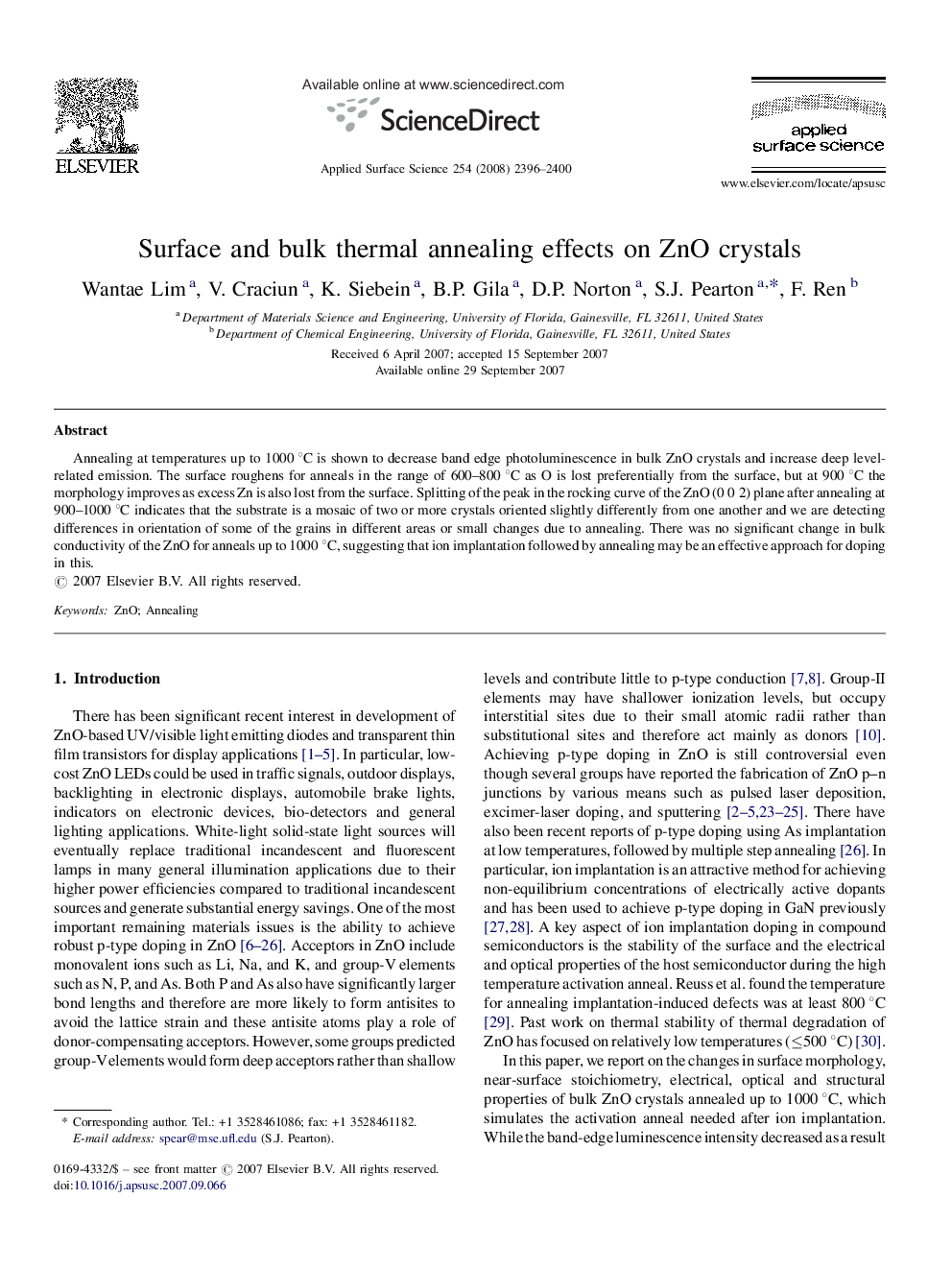| Article ID | Journal | Published Year | Pages | File Type |
|---|---|---|---|---|
| 5365864 | Applied Surface Science | 2008 | 5 Pages |
Annealing at temperatures up to 1000 °C is shown to decrease band edge photoluminescence in bulk ZnO crystals and increase deep level-related emission. The surface roughens for anneals in the range of 600-800 °C as O is lost preferentially from the surface, but at 900 °C the morphology improves as excess Zn is also lost from the surface. Splitting of the peak in the rocking curve of the ZnO (0 0 2) plane after annealing at 900-1000 °C indicates that the substrate is a mosaic of two or more crystals oriented slightly differently from one another and we are detecting differences in orientation of some of the grains in different areas or small changes due to annealing. There was no significant change in bulk conductivity of the ZnO for anneals up to 1000 °C, suggesting that ion implantation followed by annealing may be an effective approach for doping in this.
